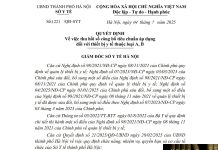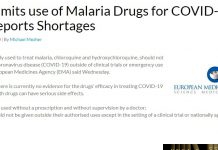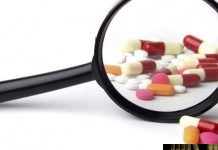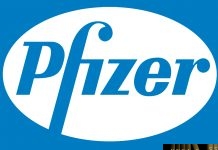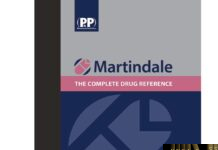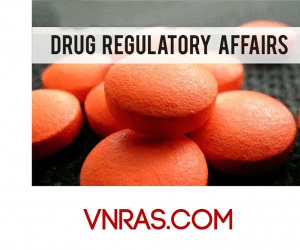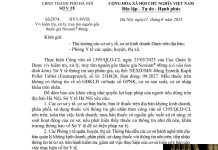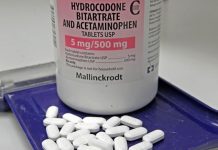European Parliament Approves Medical Device IVD Regulations
- The European Parliament has approved final versions of the Medical Device Regulations (MDR) and In Vitro Diagnostic Regulations (IVDR).
- Following official publication, the Regulations will enter into force by early June 2017.
- Implementation timeframes for the MDR (2020) and IVDR (2022) are on track.
The European Parliament has officially voted to approve the new Medical Device Regulations (MDR) and In Vitro Diagnostic Regulations (IVDR), allowing implementation efforts for these major new regulations to proceed.
According to MedTech Europe, the Parliament approved the Regulations on April 5, 2017. Formal publication of the MDR and IVDR in the Official Journal of the European Union is anticipated for early May 2017; 20 days from that publication, entry into force of the Regulations will occur, likely in early June 2017.
Now that the European Parliament has voted to approve the Medical Device Regulations (MDR), many medical device companies active in Europe have begun mapping out how the new Regulations will impact their business.
We, VNRAS, focuse on ten common industry questions according to Emergo Summary below:
1) What are the most important MDR implementation and compliance deadlines for manufacturers?
This is a complex question. For Class I medical devices there is a hard deadline at the date of application, expected in May or June 2020, but early compliance is allowed. Higher-risk devices may only switch to MDR certification once their Notified Bodies (NBs) have been designated for the MDR. This is not expected to happen before the end of 2018. “Old” Medical Device Directive (MDD) certificates may be used until they expire. One can continue to use the current MDD certificates, provided they have not expired, for four years after the date of application (May or June 2024).
2) Will unexpired CE Mark certificates be accepted during/after MDR implementation?
Yes. Unless suspended or withdrawn, all MDD certificates will remain valid until they expire, or until four years after the date of application (May or June 2024), whichever comes first. Certificates issued under MDD Annex IV or Active Implantable Medical Device Directive (AIMDD) Annex 4, however, will remain valid until they expire or two years after the date of application (May or June 2022), whichever comes first. There are some conditions for using this “grace period;” this can only be done for devices that remain in the same risk class, so no significant changes in design are allowed and the new MDR vigilance and PMS requirements must be applied.
3) Will the MDR change how we oversee our critical suppliers?
The MDR includes provisions for unannounced audits, although so did the MDD. However, now, NBs must perform unannounced audits at least once every five years. Critical suppliers should be integrated into manufacturers’ quality systems. This also means that any risks related to the production of a device must be identified and mitigated; an example of this is organizing a second, back-up source for a critical component of your device.
4) How will the MDR affect European market authorization for Class I non-sterile/non-measuring devices/non reusable instruments?
Whereas manufacturers of such devices must currently notify relevant Competent Authorities, they will be required under the MDR to enter data about their devices into the Eudamed database themselves. Such manufacturers will also have to set up quality management systems, although registrar certification of these quality systems will not be required. Clinical data requirements will also increase under the MDR.
5) What will the MDR mean for own-brand labeling (OBL) of some devices?
Every manufacturer must have access to full technical documentation according to the MDR. This would require that OBL manufacturers hand over those files, which may not be easily done. It is expected that in practice this requirement will put an end to OBL manufacturing as we know it under the MDD.
6) Will there be more stringent NB requirements for clinical evaluation reports (CERs) under the MDR?
Yes, MEDDEV 2.7/1 Rev. 4 is a big step in the direction of the MDR requirements in this area. However, MDR goes further: Clinical evaluation is a permanent process that must be covered by plans and reports. NBs will assess plans, procedures and results documented in CERs and other evidence.
7) How will the MDR change Post Market Clinical Follow-up (PMCF) requirements?
The PMCF is a “continuous process to update the clinical evaluation (Annex XIV, Part B).” This process will mainly drive the clinical performance evaluation, and must be based on real-life data. The results must be taken into account for clinical evaluation and risk management.
8) Does the MDR introduce or specify any Unique Device Identification (UDI) rules for the European market?
Each device will have to be assigned a UDI. A manufacturer must obtain a UDI code from a UDI supplier, upload device-specific data into Eudamed and then link the UDI to that data set. After that, the UDI must be placed on the device label before distribution can occur.
9) Are there any changes MDR brings in terms of device equivalency requirements?
Equivalent devices need to be equivalent with respect to technical, biological and clinical properties to such extent that it can be demonstrated that there is no clinically relevant difference (this has not changed from MEDDEV 2.7/1). The manufacturer must also be able to demonstrate equivalence by having access to equivalent device data, and the MDR even requires a contract between the manufacturer and the equivalent device manufacturer to access the technical documentation of that device. This will in practice mean that equivalence can only be claimed to devices for which a manufacturer has access to technical documentation. So, this will in practice limit the use of equivalence to devices in the same families, or to equal devices in other generations.
10) This looks like a lot of work. Where do I start?
Indeed, this IS a lot of work and you should start as soon as possible. The first step is to make a transition plan for each of your devices and for your organization as a whole. Depending on the type of device, its technical maturity, the market, etc., a manufacturer could decide to aim for a strategy to be early, be late, or go for the middle.
According to EmergoGroup
European Parliament Approves Medical Device, IVD Regulations
European Parliament Approves Medical Device and In-Vitro Diagnostics Regulations
- The European Parliament has approved final versions of the Medical Device Regulations (MDR) and In Vitro Diagnostic Regulations (IVDR).
- Following official publication, the Regulations will enter into force by early June 2017.
- Implementation timeframes for the MDR (2020) and IVDR (2022) are on track.
The European Parliament has officially voted to approve the new Medical Device Regulations (MDR) and In Vitro Diagnostic Regulations (IVDR), allowing implementation efforts for these major new regulations to proceed.
According to MedTech Europe, the Parliament approved the Regulations on April 5, 2017. Formal publication of the MDR and IVDR in the Official Journal of the European Union is anticipated in early May 2017. Twenty days from the publication, entry into force of the Regulations will occur, most likely in early June 2017.
Now that the European Parliament has voted to approve the (MDR), many medical device companies active in Europe have begun mapping out how the new Regulations will impact their business.
We, VNRAS, will focus on ten common industry questions based on Emergo Summary:
1) What are the most important MDR implementation and compliance deadlines for manufacturers?
This is a complex question. For Class I medical devices, there is a strict deadline for the application date, and compliance is expected by May or June 2020. Higher-risk devices may only switch to MDR certification once their Notified Bodies (NB) have been designated for the MDR. This is not expected to happen before the end of 2018. “Old” Medical Device Directive (MDD) certificates may be used until they expire. Likewise, the use of the current MDD certificates can be continued up to four years after the date of implementation (May or June 2024). For certificates of MDD Annex IV or Active Implantable Medical Device Directive (AIMDD) Annex 4, it can be used up to two years after the date of implementation (May or June 2022).
2) Will unexpired CE Mark certificates be accepted during/after MDR implementation?
Yes. Unless suspended or withdrawn, all MDD certificates will remain valid until they expire, or until four years after the date of application (May or June 2024), whichever comes first. Certificates of MDD Annex IV or Active Implantable Medical Device Directive (AIMDD) Annex 4 will remain valid until they expire, or until four years after the date of application (May or June 2022), whichever comes first. However, there are some conditions for using this “grace period — this can only be done for devices that remain in the same risk class; thus, there should be no significant changes in the design of the device within this timeframe so that the certificates may remain valid, while new MDR vigilance and PMS requirements must be applied.
3) Will the MDR change how we oversee our critical suppliers?
The MDR includes provisions for unannounced audits, although so did the MDD. This time, however, the NBs must perform unannounced audits at least once every five years. Critical suppliers should be integrated into manufacturers’ quality systems. This means that any risks related to the production of a device must be identified and mitigated; an example of this is organizing a second back-up source for a critical component of the device.
4) How will the MDR affect European market authorization for Class I non-sterile/non-measuring devices/non reusable instruments?
Whereas manufacturers of such devices must currently notify relevant Competent Authorities, they will be required under the MDR to enter data about their devices into the Euramed database themselves. Such manufacturers will also have to set up quality management systems, although registrar certification of these quality systems will not be required. Clinical data requirements will also increase under the MDR.
5) What will the MDR mean for own-brand labeling (OBL) of some devices?
Every manufacturer must have access to full technical documentation according to the MDR. This would require OBL manufacturers to hand-over those files, which may not be easy to do. It is expected that in practice, this requirement will put an end to OBL manufacturing as we know it under the MDD.
6) Will there be more stringent NB requirements for clinical evaluation reports (CER) under the MDR?
Yes, MEDDEV 2.7/1 Rev. 4 (guideline for clinical evaluation of medical devices under EU Directives 93/42/EEC and 90/385/EEC) is a big step in the direction of the MDR requirements in this area. However, MDR goes further: Clinical evaluation is a permanent process that must be covered by plans and reports. NBs will assess plans, procedures and results documented in CERs and other evidence.
7) How will the MDR change Post-Marketing Clinical Follow-up (PMCF) requirements?
The PMCF is a “continuous process to update the clinical evaluation (Annex XIV, Part B).” This process will mainly drive the clinical performance evaluation, and must be based on real-life data. The results must be taken into account for clinical evaluation and risk management.
8) Does the MDR introduce or specify any Unique Device Identification (UDI) rules for the European market?
Each device will have to be assigned a UDI. A manufacturer must obtain a UDI code from a UDI supplier, upload device-specific data into Eudamed and then link the UDI to that data set. After that, the UDI must be placed on the device label before distribution can occur.
9) Are there any changes MDR brings in terms of device equivalency requirements?
Equivalent devices need to be equivalent with respect to technical, biological and clinical properties to such extent that it can be demonstrated that there is no clinically relevant difference (this has not changed from MEDDEV 2.7/1). The manufacturer must also be able to demonstrate equivalence by having access to equivalent device data, and the MDR even requires a contract between the manufacturer and the equivalent device manufacturer to access the technical documentation of that device. This will, in practice, mean that equivalence can only be claimed to devices for which a manufacturer has access to technical documentation. Thus, this regulation will limit the use of equivalence to devices within in the same classification.
10) This looks like a lot of work. Where do I start?
Indeed, this is a lot of work and you should start as soon as possible. The first step is to make a transition plan for each of your devices and for your organization as a whole. Depending on the type of device, its technical maturity, the market, etc., a manufacturer could decide to aim for a strategy to have an early- or mid-transition.
Source: EmergoGroup
Edited by: Jean Ngo






